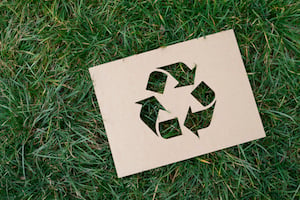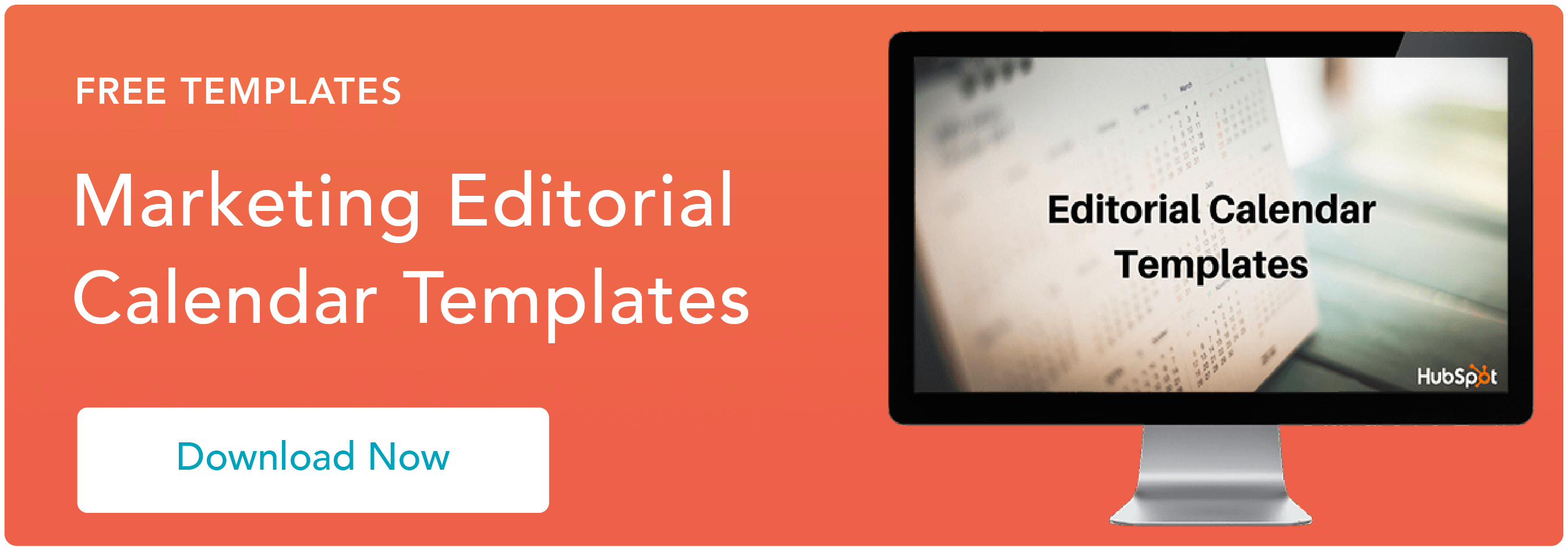 In the past, we've harped on old-school marketing. It's ineffective. It's expensive. It's a thing of the past.
In the past, we've harped on old-school marketing. It's ineffective. It's expensive. It's a thing of the past.
But it's also a great jumping-off point for your inbound marketing content creation efforts.
What?
Yes, you read that right. Just because you're not investing as much resources into your old marketing efforts, it doesn't mean that your efforts should go to waste. There's actually a lot you can do with your old-school marketing materials to further your inbound efforts -- you just have to know which materials to use.
To help, we decided to show you how to turn some old-school pieces of content turn bright, shiny pieces of inbound content.
Immediate disclaimer: I'm not advocating to just repost one piece of content into another. You've still got to tailor the content to the platform it lives on -- you won't be able to turn a text newsletter into an email newsletter just by adding links. Still, some pieces of old-school content are better than others for certain inbound marketing tactics. Let's check 'em out.
1) Print Newsletters --> Email Newsletters
You've spent a ton of time putting those print newsletters together, so why not squeeze more juice out of them in a digital format?
Even though you can't just digitize the print newsletter and be done with it, you'll have 60% of the work done on an email newsletter. Most of the educational content (the copy and the pictures) can be transferred -- though you probably will need to edit down your copy to be email-friendly. The content you'll need to chuck will be the parts that are mostly about your company -- people will want to get more educational content than promotional content.
Also, if you have the emails of those who've signed up for your print newsletters, you can also use your same list for your email newsletter -- though we'd recommend giving them overt opt-out signs on the first few emails so that uninterested folks can remove themselves from your list.
You'll also need to add some email-specific elements such as links to other pieces of your online content and a call-to-action for your subscribers. You want your subscribers to take some sort of action from your newsletter.
If you want make sure your reworked newsletter is fit for email, check out this guide filled with email newsletter best practices.
2) Trade-Show Banners --> Social Media Images
When you create a trade-show banner for your booth, it has a limited lifespan: For as long as you're at that trade show, the banner is useful. Maybe you can reuse it for another show you're doing, but chances are the banner will get rolled up in the back of that random closet in your office.
While you can't get your money back for actually producing and printing the banner, you can reuse the banner design to benefit your social media profiles.
As you know, social networks are incredibly visual -- often, you're customizing a profile picture, a header image, and a background, never mind the content you actually share through that network. So, grab a social media image template, reformat some of your banner's design to fit properly, and post it as one of your social media images.
3) Banner Ads --> Blog Calls-to-Action
The goal in both a banner ad and a blog call-to-action (CTA) is to get people to click through to something else, right? So why not take your ad, add some inbound best practices, and have a blog CTA ready to go? Sounds logical to me.
You may have to resize your banner ads and change up some of the copy to make them sound enticing to your blog readers. Also be sure your CTA doesn't pop up, take over the screen, or move in the slightest -- that's not an experience your blog readers will enjoy.
4) Whitepapers --> Ebooks
Whitepapers aren't exactly a thing of the past, but there's lots more you can be doing with them than just leaving them be after they go out to the printer -- for instance, you can turn one into an ebook to live behind a lead generation form.
But isn't an ebook a whitepaper in digital form, you say? Not always. Often, ebooks will showcase long-form content, but they always have easy-to-read copy and excellent design. If you feel like you need some help in that department, check out these ebook templates. Copy and paste your whitepaper copy into the templates, give it an edit to keep things short, sweet, and engaging, and then you're on your way to getting new leads.
5) Research Reports --> Infographics
Few people like slugging through page after page after page of graphs and charts -- especially when they can get the same information through an entirely different medium ... like an infographic. While an infographic won't give the same level of detail that a research report will, it will be much easier to digest and share, which'll all mean more traffic and leads for your team.
Convinced yet? If you need help making an infographic, there are lots of free templates and tools out there for you.
6) Brochures --> Website Pages
Ever written a brochure about what your company does? Great! You now have content for your site pages (including things like your product or 'about us' pages). While these aren't the pages you use to generate leads, they will help prospects learn more about your company as they begin considering you as a place to buy something from.
Full disclosure: you'll probably have to add copy to your website pages and tweak them for a truly web-optimized experience, but pulling copy and photos from brochures can give you a great jumping-off point.
7) Direct Mail --> Email Marketing
We've hated on bad direct mail in the past, but I'll admit there are some things you can take from the practice to benefit your inbound marketing. Most of the copy and visual content can transfer over from one tactic to another, since both are highly visual platforms trying to capture someone's attention in a short amount of time.
A couple things you'll have to change? You've got to work harder on the subject line. It'll be your gatekeeper to actually getting opened. You're also going to need to organically grow your list -- buying lists for email marketing is a huge no-no. It'll make your spam and unsubscribe rate plummet, which could affect the deliverability of the rest of your emails.
8) Radio Ad Copy --> Tweets
Short, sweet, action-oriented copy works well for both marketing tactics, but one will cost you lots and lots of money and the other won't. Can you guess which is expensive?
To take your radio copy and turn it into terrific tweets, you'll have to slice and dice your 15- or 30-second spots into something under 140 characters and tone down the "sell."
And of course, if you're hoping to generate leads from Twitter, you'll need to link to relevant content on your website (that whitepaper turned ebook, perhaps?). You're also going to want to add visual content to your tweets -- that can help you get more traffic and leads to your site.
Creating inbound content isn't all that difficult when you realize how much you already have in your arsenal. Even if you're ditching your old-school ways in favor of cheaper, more successful inbound marketing tactics, you can still use your traditional marketing materials to get you off to a great start.
How else can you reuse and repurpose old-school marketing content for your inbound efforts?



![Millennials vs. Gen Z: Why Marketers Need to Know the Difference [New Data]](https://knowledge.hubspot.com/hubfs/Untitled%20design%20-%202024-05-14T151228.178.jpg)


![How to Delete Your Instagram [Easy Guide]](https://www.hubspot.com/hubfs/delete-instagram.png)

![How to Edit a PDF [Easy Guide]](https://www.hubspot.com/hubfs/280_How-to-Edit-PDF.png)

![Marketing Without a Budget? Use These 10 Tactics [Expert Tips]](https://www.hubspot.com/hubfs/marketing%20without%20budget.jpg)

